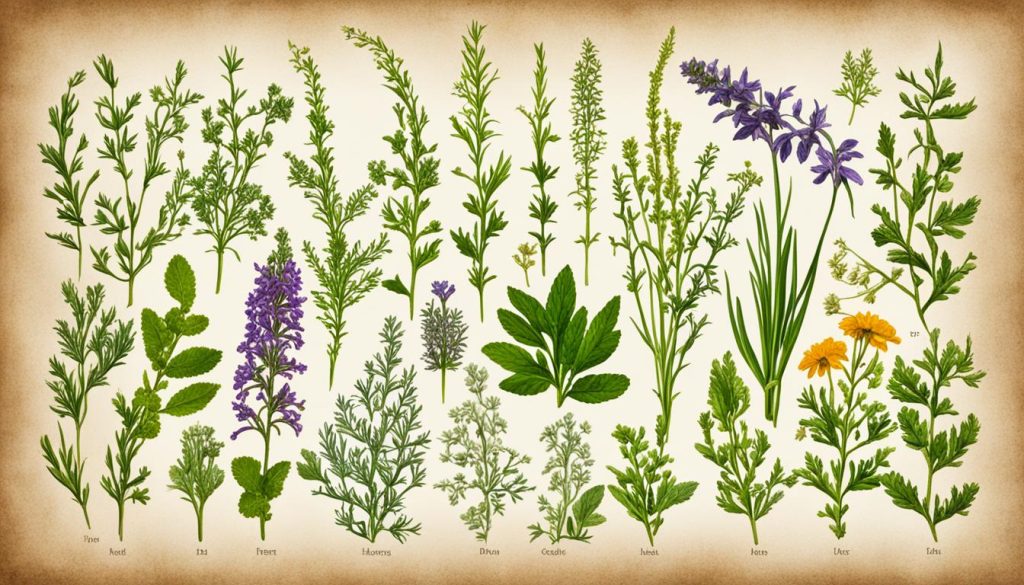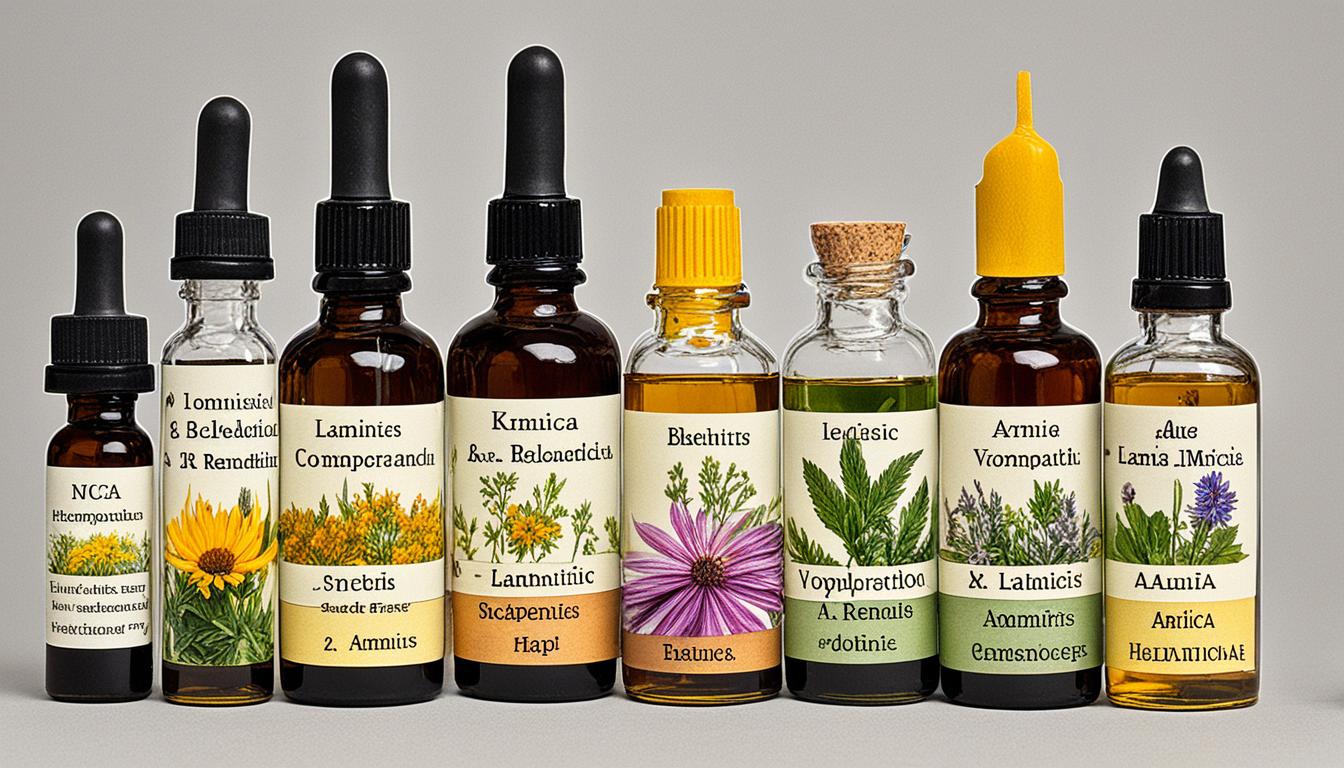Equine laminitis is a serious condition. It causes inflammation in the horse’s foot. This happens because there’s a change in how blood flows in the foot’s outer blood vessels.1
Vascular issues lead to small clots and attract harmful white blood cells. This makes the lining inside the foot not work well. It also messes up with how the body relaxes blood vessels, making the blood flow worse. This mix results in the foot’s structures not staying together, so the bone might pull away from the hoof.
When this happens, the foot gets even less blood, which starts a cycle of more problems. A gas called Nitric Oxide can either help or hurt during this cycle. Alongside regular signs of swelling and damage, we see certain immune cells activate proteins that can make the condition worse. They produce some gas that tells blood vessels to relax more. This gas can come from blood clot breakdown or fat breaking down, both of which are more active in the sick foot.
Key Takeaways
- Natural treatments, including homeopathy, can significantly increase the success rate of treating chronic laminitis in horses.1
- Chronic laminitis can cause a variety of clinical signs, such as long hair that does not shed out, weight problems, and insulin resistance.1
- Nutritional support, including high-fiber and low-carbohydrate diets, is critical for managing laminitis in horses.1
- Homeopathic remedies can be prescribed based on the individual horse’s symptoms and personality traits.2
- Complementary therapies, such as acupuncture and Shiatsu, can assist in managing laminitis symptoms.3
Understanding Equine Laminitis
Causes and Symptoms
Laminitis is when a horse’s foot structures inside get badly swollen. This includes the part that links the coffin bone to the hoof wall. It happens because of issues like too many carbs, troubles with the metabolism, and foot injuries.2Symptoms are clear, with the horse limping, its pulse in the foot faster, the hoof feeling warm, and a clear sign the horse wants to move as little as possible.
Pathophysiology of Laminitis
Laminitis’ development involves blood flow issues, small blood clots, problems with the cells lining blood vessels, plus the beginning of an inflammation. This inflammation can make crucial foot structures disconnect and the coffin bone shift.1Horses with laminitis often have too much insulin. This leads to an unhealthy use of sugar that’s turned into fat.
Acute vs. Chronic Laminitis
2 Acute laminitis hits the horse suddenly and is very painful. Chronic cases, however, gradually get worse and hurt the horse’s hooves more with each cycle. Over time, the hoof changes shape.2 In chronic situations, the coffin bone might move, the horse’s metabolism is off balance, and the root cause may not be clear.
| Acute Laminitis | Chronic Laminitis |
|---|---|
| 2 Acute laminitis needs quick and hard treatment to stop permanent harm to the foot. | 2 Chronic cases show a bone rotation, metabolic issues, but without a clear cause. |
| Sudden pain and swelling appear | Hoof condition worsens over time, with shape changes and new episodes |
| 1 Helping the horse eat better is crucial, with diets focused on lots of fiber and little sugar. | 1 Natural remedies can be very effective for long-term laminitis care. |
2 In the case of chronic laminitis, there are two main types, linked to thyroid or pituitary issues.2 Horses with thyroid problems are often fat but picky about food, while those with pituitary issues are usually thin. They might have a fat deposit by the mane and their body is stiff.
2 Diagnosing laminitis is about noticing the horse walks stiffly, reacts to foot pressure, and has a faster digital pulse.
1 Signs of chronic laminitis include long, unshed hair, weight issues, and a difficulty handling sugar.1 Treatment must fit each horse, and too many supplements are not good.
Homeopathic Approach to Laminitis
Natural medicine offers a different way to treat chronic laminitis. Key steps are proper foot support, improving gut health, using natural remedies to heal the laminae, and balancing the horse’s metabolism. When these steps are followed with care, most chronic cases can get back to some work.
The harder-to-treat cases can still find comfort without drug use. Treating laminitis with alternative medicine means focusing on each horse’s needs. It’s crucial not to mix too many supplements or treatments without thought. This can actually harm the horse.1
| Key Factors in Homeopathic Laminitis Treatment |
|---|
| Support proper hoof care |
| Correct intestinal health |
| Provide nutritional medicine to prevent and reverse laminar damage |
| Return the horse’s metabolism to proper balance |
By being patient and thorough, most chronic laminitis cases can improve.1 Even the difficult cases can be managed well without standard drugs, thanks to a homeopathic approach. However, it’s vital to treat each horse uniquely. Just giving a mix of treatments without thinking can be harmful.1
Homeopathic Remedies for Laminitis
Homeopathic remedies are a natural way to help with horse laminitis. They work for both sudden and long-lasting cases. In a test, laminitic horses got homeopathic meds like Aconitum 30ch, Apis 15ch, Arnica 7ch, Belladonna 9ch, and Nux vomica 9ch.
Each horse took 2 pellets of each med every hour, for 10 hours a day, for 10 days straight.2
Aconitum
Aconitum treats horses with a hard digital pulse, big pupils, and warm feet.2
Arnica
Arnica helps with laminitis in horses that feel achy and have a high but not strong digital pulse.2
Belladonna
Belladonna is good for laminitis with a fast digital pulse.4
Apis
Apis is great for horses with big leg swelling, no thirst, and they feel worse in hot weather.2
Nux Vomica
Nux vomica works when laminitis starts after eating too much green grass, feed, or hay.2
These remedies quickly helped with the signs of laminitis in the tested horses.2
Constitutional Remedies
Aside from quick remedies, there are also constitutional remedies for laminitis. These take a deeper look at the whole horse.2 For instance, Thuja is great if the horse was recently vaccinated. Calc Carb horses may be slow but are usually friendly. Sulphur horses are full of energy and have strong personalities. Graphites horses have thick feet and might have old scars that healed poorly. Silicea horses are quite sensitive and get affected by pain easily, often having abscesses.
Constitutional remedies aim to balance the horse’s whole system. This might help prevent laminitis in the future.
Thuja
Thuja is helpful, especially for vaccinated horses.2
Calcarea Carbonica
Calc Carb horses are slow and stubborn but friendly.
Sulphur
Sulphur horses have a lot of energy and a bold personality.
Graphites
Graphites horses have thick feet and may show old scars.
Silicea
Acute and Chronic Laminitis Remedies
Aside from the first treatments, different homeopathic remedies help with acute laminitis and chronic laminitis. Arsenicum Album is good for horses with bad hooves, sick frogs, and thrush. Phosphorus is also useful, treating issues like gastric ulcers and sugar in the urine. Rhus Toxicodendron helps with tendon problems. These horses often stand still but get better when they move.5 The choice of remedies depends on the horse’s specific needs and how the illness progresses.

Complementary Therapies
Other than homeopathic cures, complementary therapies help heal laminitis too. These include acupuncture and chiropractic work. It’s better to pick acupuncture or homeopathy, not both at the same time.36 Also, what the horse eats is important. It should get high-fiber, low-carb food and supplements. These help fight damage caused by free radicals and keep the gut healthy.3 Using different natural treatments together works well for chronic laminitis.
Acupuncture
Veterinary Acupuncture helps horses with laminitis. A 2017 study talks about this in the Canadian Veterinary Journal, showing progress in the field.3
Chiropractic
Chiropractic care is good for laminitis too. It deals with spine or joint problems. This makes the whole body work better and helps the horse recover.
Nutritional Support
3 Other therapies like aromatherapy and Equine Touch are also considered. They show the wide range of care options for laminitis. Various herbs are used too, such as Aloe Vera and Nettle, focusing on natural healing.
Hydrotherapy, like Equine spa, is recommended to improve foot circulation. This combines new and old methods for treatment.
| Complementary Therapy | Benefits for Laminitis |
|---|---|
| Acupuncture | Studied as a complementary therapy for laminitis, can help alleviate symptoms and support recovery |
| Chiropractic | Addresses spinal and joint misalignments, improves overall body function to aid in laminitis recovery |
| Nutritional Support | Provides high-fiber, low-carb feeds, supplements like CoQ10 to address free radical damage, and supports intestinal health |
Using these therapies with homeopathy makes a full treatment plan. This helps deal with laminitis and keeps the horse healthy.
Hoof Care and Management
Proper hoof care is key in dealing with laminitis. It’s best to keep shoes on until the pain lessens, but not if the front of the hoof is too long.2 Using frog supports is beneficial, just make sure they don’t touch the sole. Theraflex or wedge pads can also help by reducing tendon strain.
Shoeing Techniques
Using heart bar shoes, Theraflex pads, and trimming the front of the hoof can make walking easier for the horse.2 Regular hoof trimming by a skilled farrier is a must. This keeps the feet healthy and lowers the chances of laminitis coming back.
Frog Supports
Frog supports can be a big help for horses with laminitis, but they must not press against the sole.2 They improve weight distribution on the hoof, which is good for healing.
Hoof Trimming
Good, regular trimming is vital for hoof health after laminitis. It’s part of keeping the horse’s feet in good shape and preventing more laminitis.2 A farrier who knows how to trim and fit shoes correctly is important for recovery and ongoing hoof care.
| Hoof Care Aspect | Recommended Approach |
|---|---|
| Leaving Shoes On | Until soreness subsides, unless toes are excessively long2 |
| Frog Supports | Provide relief, but should not contact the sole2 |
| Shoeing Techniques | Heart bar shoes, Theraflex pads, shortening the toe2 |
| Hoof Trimming | Regular, tailored trimming by an experienced farrier2 |
Prevention Strategies
Preventing laminitis is key as treating it can be hard. It’s crucial to lower the risk.7 You should change the horse’s diet, removing high-carb foods and watching their pasture time. Giving them vitamins and minerals is also good.8 Make them move often and help them stay calm. Plus, keeping their hooves in shape is a must to avoid laminitis.7 A preemptive approach helps dodge many laminitis cases.
Dietary Modifications
To stop laminitis, cut out high-carb foods and limit pasture time.8 Wetting hay can lower its sugar, and thus, sugar in the diet. This can help a lot.7 Also, giving them extra vitamins and minerals, like those from Rush Creek, boosts their health. It cuts down on the need for more supplements.
Exercise and Stress Management
Keeping the horse active and stress-free is vital for their health.8 Some horses do better with different treatments like being barefoot, using certain trims, getting more exercise, taking new supplements, or even acupuncture.7 Keeping horses in areas like mud or sand, especially after they’ve had grains, can help prevent laminitis too.
Regular Hoof Care
Good hoof care is very important to stop laminitis.7 This includes regular care and using the right shoes, like heart bar shoes. It also means knowing how to trim hooves correctly, ensuring healthy hooves.
Homeopathic Laminitis Remedies
Homeopathic remedies provide a natural way to treat horse laminitis. They look at both quick and long-lasting cases.1 These remedies dig deep. They aim to fix the root causes and the inflammation that leads to laminitis.
Short-term treatments like Aconitum, Arnica, and others bring fast help.2 But, for longer healing, remedies such as Thuja, Calc Carb, and more focus on the horse’s unique needs.2 Things like acupuncture, chiropractic, and the right diet also help a lot.1 It takes time, careful planning, and a varied treatment approach to help horses with chronic laminitis get better.

Latest Research and Developments
Research from the Australian Equine Laminitis Unit at the University of Queensland shared new insights on laminitis. Dr. Chris Pollitt focused on how the equine hoof grows normally. He found that cells needed for hoof growth come not just from the coronet. They are also produced at the tips of the primary epidermal laminae on the hoof’s upper part.2
There’s no proof that new cells grow at the distal hoof’s laminar level. The mystery of how the inner hoof wall lamellae stay connected as the hoof wall moves down is unsolved.2 This work shows how complex laminitis really is.
Australian Equine Laminitis Unit
The Australian Equine Laminitis Unit leads the way in understanding this disease. They’ve shed light on how the equine hoof grows and the problem of wall-to-coffin bone connection.2
Hoof Growth Patterns
Dr. Pollitt’s work highlights the hoof’s growth details. It’s not just the coronet but also the hoof’s top part where growth happens. This knowledge is key to understanding how laminitis develops.2
Laminar Attachment Mechanisms
A big question left is how the inner hoof wall stays connected as the wall slides. Figuring this out is vital to fight laminitis. It remains a focus of research at the Laminitis Unit.2
Consultation with Professionals
For hard-to-treat laminitis, talking to different horse experts can be really helpful.3 Specifically, special veterinarians who use homeopathy for laminitis can make a plan just for your horse. They use things like natural herbs, acupuncture, and a special diet. This can be a big part of healing your horse.
Then, there are equine dentists. They make sure your horse’s teeth are healthy. This is important because bad teeth can affect how your horse eats.3 By making sure the horse can eat well, it helps with their recovery from laminitis.
And don’t forget about farriers. They are experts in caring for horse’s hooves. If your horse has laminitis, they can use special shoeing to help.3 This includes using specific shoes and pads to reduce pain and help with healing. They also keep the hooves trimmed right, which is key to preventing more laminitis.
Homeopathic Veterinarians
If your horse has laminitis, a vet that knows about homeopathy can do a lot.3 They use natural remedies like Aconitum and Arnica to treat the horse. This can help with everything from pain to stress. It’s a way to treat the whole horse naturally.
Equine Dentists
Good dental health is key for a horse recovering from laminitis. Equine dentists look at your horse’s teeth to see if there are any problems.3 Things like sharp teeth are fixed. This makes it easier for the horse to eat, which is important for getting better.
Farriers
Farriers are very important for a horse with laminitis. Their job is to care for the hooves. They know how to shoe the horse in a way that helps them walk without pain.3 They use special methods to reduce pressure on the feet. Regular trimming from a skilled farrier keeps the hooves healthy and the horse feeling better.
Conclusion
Homeopathic remedies provide a holistic approach to both acute and chronic equine laminitis. They target the root cause and help the horse’s body heal. This approach offers quick relief and supports the horse naturally.3
When used with practices like acupuncture, chiropractic, and a good diet, homeopathic laminitis remedies work well. They help horses recover without needing strong medicines.3 Horses given natural treatment for chronic laminitis see better recovery rates.1
With time, special care, and an all-natural plan, many chronic laminitis cases can improve.
Signs of long-term laminitis include problems with shedding, weight, winter feet issues, and insulin troubles.1 Lots of these horses have high insulin, leading to fat due to insulin resistance.1
Using a lot of NSAIDs as part of laminitis care could harm the gut, studies say.1 Experts advise feeding laminitis horses a diet with lots of fiber and little sugar. Adding supplements like Coenzyme Q10 can also help as antioxidants.1
FAQ
What is laminitis and what causes it?
Laminitis is a serious foot condition in horses, causing inflammation. This affects the structures inside the foot. The condition arises from metabolic disorders, too many carbs, hormonal issues, and hoof injury.
What are the symptoms of laminitis?
Laminitis signs are lameness, strong digital pulse, hot hooves, and an aversion to walking.
What is the pathophysiology of laminitis?
The disease’s process involves blood flow problems, small blood clots, and issues with blood vessel function. It leads to the breakdown between some foot structures. This then can change the position of the coffin bone.
What is the difference between acute and chronic laminitis?
Acute laminitis comes on quickly and is very painful. Chronic laminitis happens over time, with repeated attacks and hoof changes.
How can homeopathic remedies help treat laminitis?
Homeopathy fights laminitis naturally. It targets the root issue and inflammation, not just the pain.
What are the acute-type homeopathic remedies used for laminitis?
For rapid relief in horses, homeopaths turn to Aconitum, Arnica, Belladonna, Apis, and Nux Vomica.
What are the constitutional homeopathic remedies used for laminitis?
Thuja, Calc Carb, Sulphur, Graphites, and Silicea tackle the individual’s health tendencies and imbalances that might spark laminitis.
What other homeopathic remedies can be used for different stages and presentations of laminitis?
Arsenicum Album, Phosphorus, and Rhus Toxicodendron fit the bill for specific stages of laminitis, like bad hoof quality or tendon issues.
How can complementary therapies be used in conjunction with homeopathic remedies for laminitis?
Acupuncture, chiropractic care, and good nutrition complement homeopathy for better healing and balance.
What are the important considerations for hoof care and management in laminitic horses?
Correct hoof care, shoeing methods, supporting the frog, and custom trimming from a skilled farrier are key. They help the horse’s foot recover properly and avoid more laminitis.
What are some key strategies for preventing laminitis?
To prevent laminitis, focus on the horse’s diet, keep him moving, manage stress, and ensure regular hoof care. This supports good health and foot balance.
Source Links
- https://murdochmethod.com/natural-treatment-of-chronic-laminitis/
- https://holistichorsekeeping.com/articles/a-holistic-approach-to-chronic-laminitis.html
- https://taranet.co.uk/AnimalCareDirectory/Animal Care Guide/Laminitis and Holistic Therapies/
- https://www.traininghorses-naturally.com/homeopathic-treatment-for-acute-laminitis/
- https://www.mcdowellsherbal.com/treatments/for-horses/878-founder-and-laminitis
- https://pubmed.ncbi.nlm.nih.gov/10472124/
- https://equusmagazine.com/news/eqharman2824
- https://www.hoofrehab.com/ArticlesPDF/New Ways To Beat Laminitis.pdf

